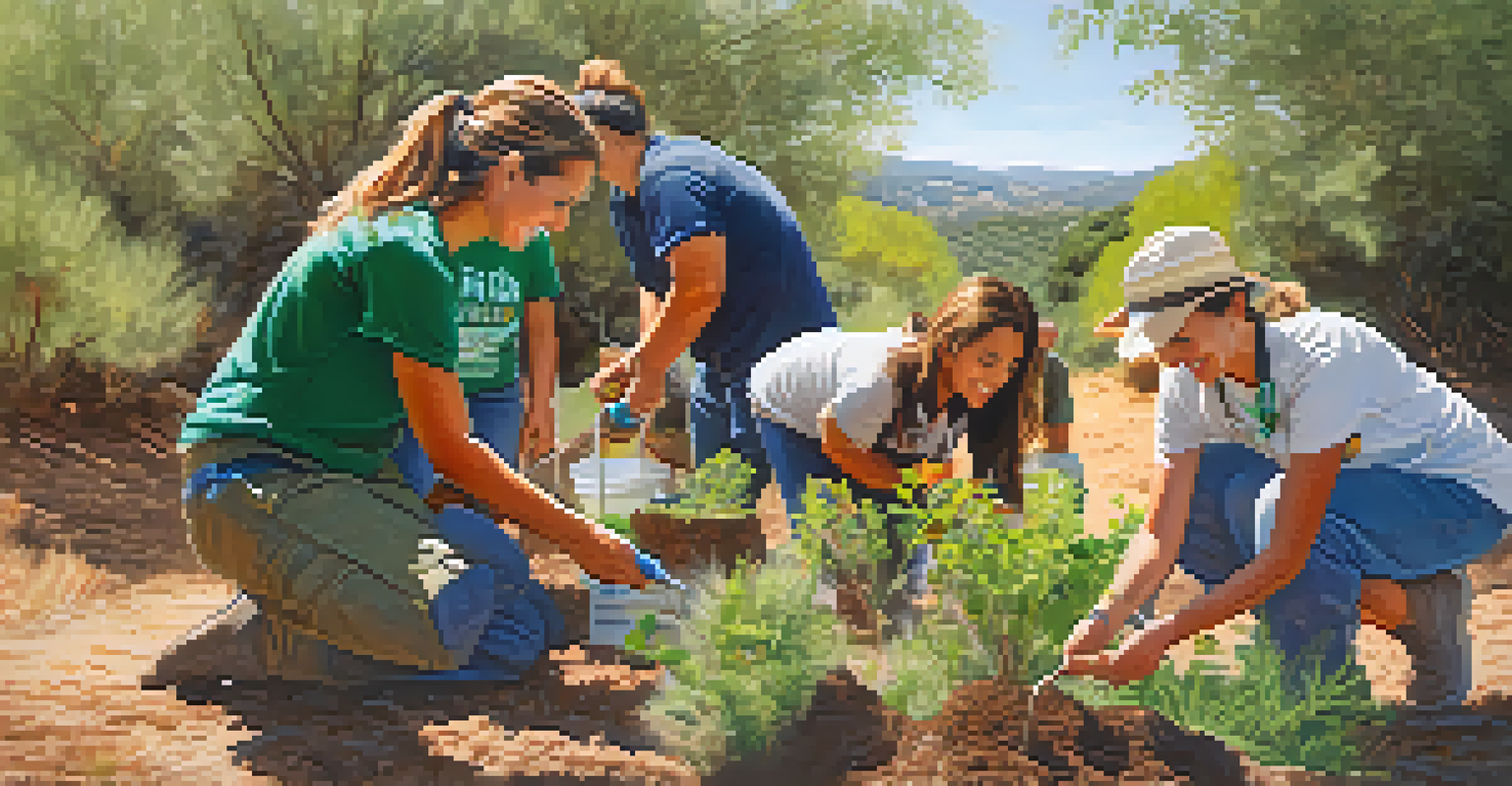Wildlife Conservation Efforts During Guided Tours in Spain

Understanding Wildlife Conservation in Spain
Wildlife conservation in Spain is a vital aspect of preserving its rich biodiversity. With various ecosystems ranging from mountains to coastlines, Spain is home to numerous species, many of which are endangered. Conservation efforts aim to protect these species while educating the public about their importance and the need for sustainability.
The future will be shaped by the choices we make today, and those choices can have a profound impact on wildlife conservation.
Spain has made significant strides in wildlife protection, including the establishment of national parks and protected areas. These spaces provide a sanctuary for native wildlife and serve as a crucial part of conservation strategies. Through these initiatives, Spain not only safeguards its natural heritage but also promotes eco-tourism.
Guided tours play a crucial role in these conservation efforts by allowing visitors to experience wildlife in their natural habitats. This approach not only fosters a connection between tourists and nature but also raises awareness about the challenges faced by various species.
The Role of Eco-Tourism in Conservation
Eco-tourism is a growing trend in Spain, encouraging responsible travel that benefits both the environment and local communities. By participating in eco-friendly tours, travelers contribute directly to conservation projects, helping to fund initiatives that protect wildlife. This model shifts the focus from mere sightseeing to a more meaningful engagement with nature.

Tour operators often collaborate with conservationists to create experiences that highlight the importance of wildlife protection. For example, birdwatching tours in the Doñana National Park provide visitors with a chance to observe rare species while learning about their habitats. Such tours not only enrich the visitor experience but also help gather valuable data for conservation efforts.
Eco-Tourism Fuels Conservation
Eco-tourism in Spain promotes responsible travel that directly supports wildlife conservation initiatives and local communities.
Moreover, eco-tourism promotes local economies, as communities benefit from the income generated by tours. This encourages residents to value and protect their natural surroundings, fostering a culture of conservation that can be passed down through generations.
Guided Tours: A Hands-On Learning Experience
Guided tours offer participants an interactive way to learn about wildlife conservation. Knowledgeable guides share insights on local flora and fauna, making the experience both educational and engaging. This hands-on approach helps demystify complex conservation topics, enabling visitors to grasp their significance.
In every walk with nature, one receives far more than he seeks.
For instance, during a tour in the Picos de Europa, guides may explain the delicate balance of the ecosystem and the impact of climate change on local species. By witnessing this firsthand, participants can better understand the urgency of conservation efforts. Such experiences often leave a lasting impression, inspiring individuals to advocate for wildlife protection.
Additionally, these tours often include activities like habitat restoration or wildlife monitoring, allowing participants to contribute actively to conservation. This involvement not only enhances their understanding but also reinforces the idea that everyone has a role to play in protecting the environment.
Success Stories of Conservation in Spain
Spain has numerous success stories in wildlife conservation, showcasing the positive impact of guided tours. For instance, the reintroduction of the Iberian lynx, one of the world's most endangered cats, has been bolstered by eco-tourism initiatives. Guided tours in areas like Andújar have helped raise awareness and funds for the lynx's preservation.
Another example is the recovery of the Spanish imperial eagle, which faced severe population declines. Conservation programs, supported by eco-tourism, have helped increase their numbers significantly. Guided tours allow visitors to witness these magnificent birds while learning about the efforts behind their resurgence.
Guided Tours Enhance Awareness
Guided tours provide interactive learning experiences that deepen visitors' understanding of wildlife conservation challenges.
These success stories illustrate how wildlife conservation and tourism can work hand-in-hand, leading to tangible benefits for both nature and local economies. By showcasing these achievements, Spain encourages further participation in conservation through guided tours.
Challenges Facing Wildlife Conservation in Spain
Despite the successes, wildlife conservation in Spain is not without its challenges. Habitat loss due to urbanization, agriculture, and tourism poses significant threats to many species. As natural habitats shrink, wildlife faces increased competition for resources, making conservation efforts even more critical.
Additionally, illegal activities such as poaching and trafficking of endangered species continue to jeopardize biodiversity. Guided tours can help combat these issues by raising awareness and promoting ethical wildlife viewing practices. Responsible tourism encourages visitors to respect wildlife and their habitats, reducing human impact.
Education plays a key role in addressing these challenges. By informing tourists about the issues faced by wildlife, guided tours can inspire a collective commitment to conservation. This not only benefits the species at risk but also enriches the travel experience by fostering a sense of responsibility.
The Future of Guided Tours and Conservation
Looking ahead, the future of guided tours in Spain appears promising in the realm of wildlife conservation. With an increasing number of travelers seeking sustainable experiences, tour operators are adapting to meet this demand. This trend encourages the development of more eco-friendly tours focused on conservation efforts.
Innovative approaches, such as virtual tours and citizen science programs, are also emerging. These initiatives allow people to participate in conservation from anywhere in the world. By leveraging technology, conservationists can engage a broader audience and create a community dedicated to protecting wildlife.
Success Stories Inspire Action
Successful conservation efforts in Spain, such as the recovery of the Iberian lynx, demonstrate the positive impact of combining tourism with ecological stewardship.
Ultimately, the fusion of guided tours and wildlife conservation has the potential to inspire future generations. By fostering a deeper connection with nature, these experiences can cultivate a culture of stewardship that ensures the protection of Spain's diverse ecosystems for years to come.
How You Can Contribute to Conservation Efforts
As a traveler, you have the power to make a difference in wildlife conservation efforts in Spain. Choosing eco-friendly tours is one of the simplest ways to support local initiatives. Look for operators that prioritize sustainability and contribute to conservation projects with their profits.
Additionally, educating yourself about the species and ecosystems you encounter can enhance your experience. Share your knowledge with friends and family, spreading awareness about the importance of preserving wildlife. Your voice can inspire others to value and protect natural habitats.

Lastly, consider volunteering with conservation organizations during your travels. Many programs offer opportunities to lend a hand in habitat restoration, wildlife monitoring, or community education. This hands-on involvement allows you to contribute directly to conservation while gaining a deeper understanding of the challenges faced by wildlife.